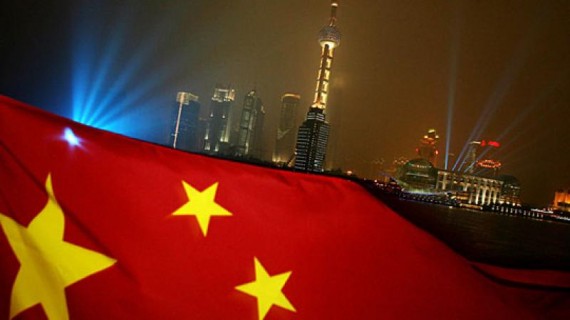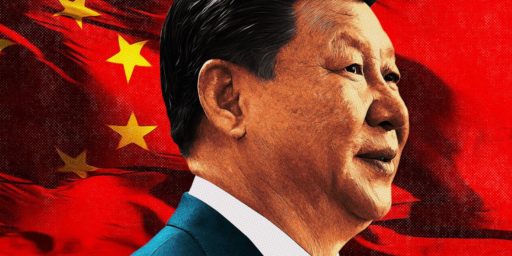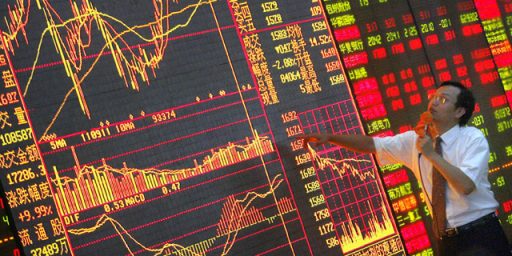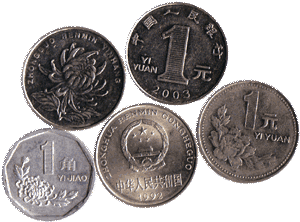The End of the Affair
To maintain growth China needs to consider its priorities.
Stratfor’s George Friedman has an op-ed on the end of the “Chinese economic miracle” that is worth some consideration:
Major shifts underway in the Chinese economy that Stratfor has forecast and discussed for years have now drawn the attention of the mainstream media. Many have asked when China would find itself in an economic crisis, to which we have answered that China has been there for awhile — something not widely recognized outside China, and particularly not in the United States. A crisis can exist before it is recognized. The admission that a crisis exists is a critical moment, because this is when most others start to change their behavior in reaction to the crisis. The question we had been asking was when the Chinese economic crisis would finally become an accepted fact, thus changing the global dynamic.
Last week, the crisis was announced with a flourish. First, The New York Times columnist and Nobel Prize-recipient Paul Krugman penned a piece titled “Hitting China’s Wall.” He wrote, “The signs are now unmistakable: China is in big trouble. We’re not talking about some minor setback along the way, but something more fundamental. The country’s whole way of doing business, the economic system that has driven three decades of incredible growth, has reached its limits. You could say that the Chinese model is about to hit its Great Wall, and the only question now is just how bad the crash will be.”
I think there are some shortcomings in Mr. Friedman’s analysis, particularly his economic analysis. I question his analysis of Chinese inflation:
The Chinese are thus in a trap. If they continue aggressive lending to failing businesses, they get inflation. That increases costs and makes the Chinese less competitive in exports, which are also falling due to the recession in Europe and weakness in the United States. Allowing businesses to fail brings unemployment, a massive social and political problem. The Chinese have zigzagged from cracking down on lending by regulating informal lending and raising interbank rates to loosening restrictions on lending by removing the floor on the benchmark lending rate and by increasing lending to small- and medium-sized businesses. Both policies are problematic.
and I think his characterization of China’s investment in U. S. Treasuries:
The Chinese are, of course, keeping a great deal of money in U.S. government instruments and other markets. Contrary to fears, that money will not be withdrawn. The Chinese problem isn’t a lack of capital, and repatriating that money would simply increase inflation. Had the Chinese been able to put that money to good use, it would have never been invested in the United States in the first place. The outflow of money from China was a symptom of the disease: Lacking the structure to invest in China, the government and private funds went overseas. In so doing, Beijing sought to limit destabilization in China, while private Chinese funds looked for a haven against the storm that was already blowing.
fails to take into account how central that investment was to China’s mercantilist strategy. There isn’t much the Chinese could do with the U. S. dollars they received in exchange for goods other than purchase U. S. goods, invest in U. S. companies, or buy Treasuries. Not only was buying Treasuries the good, conservative investment decision, increasing Chinese consumer spending was diametrically opposed to their short and medium term economic strategies.
However, I think that his central point, that China’s economic growth is likely to be slower going forward than it has been for the last several decades, is likely correct and I find his observations about the geopolitical implications of the relative slowdown interesting.
There are any number of reasons to believe that China’s economic growth might, indeed, be slowing. There is a widely-observed wall in economic development once a country has reached a certain level of per capita income. It’s time for China to realize more growth via consumer spending but that would necessitate substantial increases in wages which runs counter to China’s strategy of growth by being the low cost provider of labor.
Like the Soviet Union before it, much of China’s economic growth has come by moving labor from relatively unproductive agriculture to more productive use in light and heavy manufacturing. Unlike the Soviet Union for many years China was able to do that while increasing agricultural productivity. As I’ve documented in the past, China’s agricultural productivity peaked some time ago and it’s now at roughly the same level as South Korea or Japan so it seems unlikely it will increase much more. That means that, if future economic growth comes from moving resources from agriculture to industrial production, it will come at the expense of agricultural production.
That runs headlong into another Chinese priority: food independence. To maintain its development path China will need to decide among its many priorities. Or it may decide that the dangers of political instability created by a change in those priorities is greater than the political instability created by slowing growth.







I have read in a # of places that China was so desperate to keep growth high that they built factory complexes for which there was no need. Apartment complexes for which there was no demand. As a result, these Potemkin Villages sit idle and empty and will continue to be so for the foreseeable future.
@OzarkHillbilly: China’s Ghost Cities
@Mikey: Good link. 64 million empty units in China. I have to admit I had some skepticism that this could solely be for GDP boosting, but if you build so much housing surplus and refuse to lower the price to what the market can afford, the assumption has to be that you want to represent an exaggerated value to the developments.
That Which is Seen and That Which is Unseen. What is seen is the expensive construction and what is unseen is the vacancy. The slight of hand is to value one and ignore the other.
I don’t think it is or at least not exactly. Local officials have incentives to boost production. That can cause all sorts of harebrained projects to get approved. That’s one of the reasons for the enormous level of non-productive loans.
And the empty units are not completely useless. I’ve read reports of the countryside being scoured of farmers who are in some cases forcibly moved into city apartments.
@Dave Schuler: The linked story claims that the central government pegs GDP goals, and the local officials build these developments as the easiest way to meet them.
The point that stood out to me was that the vacant (or perhaps somewhere btw/ 70-100% vacant) are being sold for $70,000 to $100,000 in a country where the average annual wage is $6,000. Why wouldn’t the government cut the price? One reason appears to be that some of the vacant housing stock has actually been purchased by wealthy flippers. Maybe these are influential people with the party and so the government is reluctant to take steps that might devalue their investment, but the continuing building frenzy devalues the investment as well. Who are they ultimately going to flip to? It seems more likely that the problem with cutting the price is that it cuts the value of the development, thus reducing GDP.
@PD Shaw:
Each other. It’ll be the most amazing pyramid scheme ever.
@Mikey: I suppose nobody could get hurt.
If only someone could figure out a way to bet on those flips, or better yet bet on the outcomes of the associated mortgage debt! Why, it’d be the bestest thing ever!
😉
Saw this in the NYTimes this morning & thought of this Post by Dr Schuler:
http://www.nytimes.com/2013/07/25/business/global/manufacturing-in-china-contracts-further.html